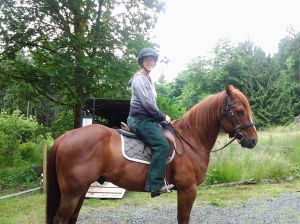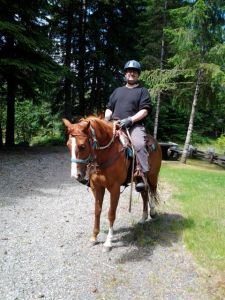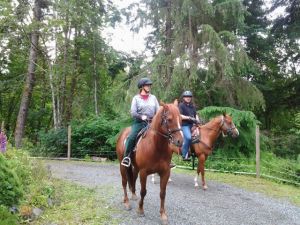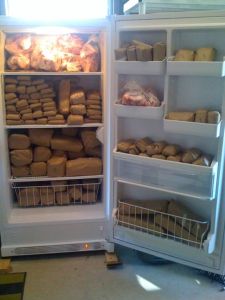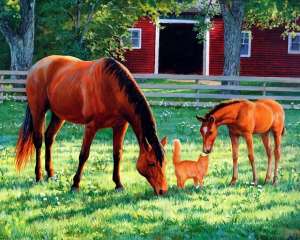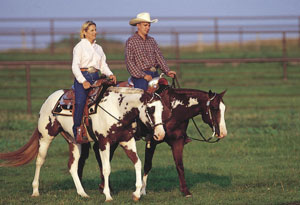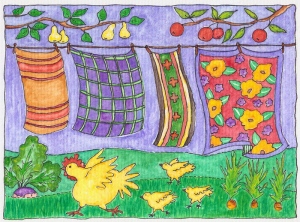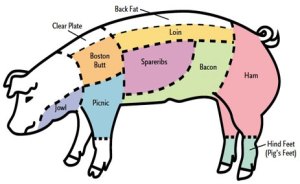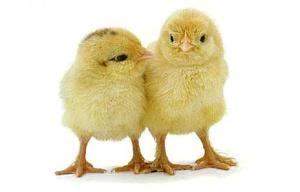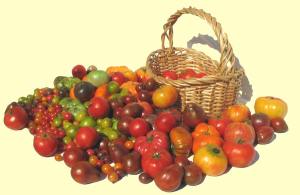Fall is definitely here. It was amazing how quickly it happened. But I’m not complaining. Despite our very short summer I still love autumn. I think it’s my favourite season. Today’s post will tell a disjointed story in pictures, but the overall theme is: here’s what’s going for us these days!
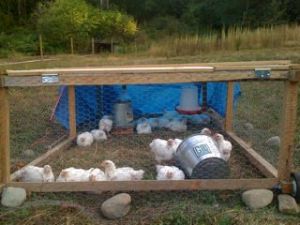 The chickens are starting to look like…well, like chickens. They have most of their feathers now, but with the evenings getting pretty cool I’m keeping their heat lamp on at night. I’m proud to say we didn’t lose a single chick. I’m wondering if this is because the feed store had them for the first 24 hours and got them past the worst of it. But with 25 birds I’ve got two feeders going now and will have to add another water bucket too so I only have to fill them once a day. These guys eat and drink a lot! I’m moving the tractor pretty much every day, and they have gotten into the spirit now. When I begin to move it they all rush forward to the new clover and grass and dig in. Just like the other chickens, if either the feed or the water gets empty they will crowd around the walls closest to the house and just stare, apparently in the hopes of catching someone’s eye. Guess they aren’t so dumb after all!
The chickens are starting to look like…well, like chickens. They have most of their feathers now, but with the evenings getting pretty cool I’m keeping their heat lamp on at night. I’m proud to say we didn’t lose a single chick. I’m wondering if this is because the feed store had them for the first 24 hours and got them past the worst of it. But with 25 birds I’ve got two feeders going now and will have to add another water bucket too so I only have to fill them once a day. These guys eat and drink a lot! I’m moving the tractor pretty much every day, and they have gotten into the spirit now. When I begin to move it they all rush forward to the new clover and grass and dig in. Just like the other chickens, if either the feed or the water gets empty they will crowd around the walls closest to the house and just stare, apparently in the hopes of catching someone’s eye. Guess they aren’t so dumb after all!
 The garden is looking neat, if not productive, since I finally got around to mowing the grass. Next year I plan to lay down some sawdust or wood chips to create proper pathways between the beds. While we did get a fair bit of lettuce before it bolted, there wasn’t much else going on this summer, except for the tomatoes! Those five plants have eight neighbours in a row outside the view in this photo, and most of them have done well. We’ve been eating tomatoes every day for weeks now, and my new favourite meal is bacon and eggs with fried tomatoes – so sweet! I know with the weather cooling and the rainy season on its way our tomato days are numbered. Hopefully I can pick all the green ones before that time comes and ripen what I can indoors. It will be incredibly depressing to go back to grocery store tomatoes. I’ve given up on a fall/winter garden in exchange for working on soil building. My raised beds are actually sunken beds with very little topsoil, so my plan this fall is to do some mulching with paper feed bags, compost, dry leaves, cut plants (like mullein, which grows in abundance here and fixes nitrogen) and any other organic matter I can get my hands on. My hope is to have much deeper and richer soil in time for spring planting next year.
The garden is looking neat, if not productive, since I finally got around to mowing the grass. Next year I plan to lay down some sawdust or wood chips to create proper pathways between the beds. While we did get a fair bit of lettuce before it bolted, there wasn’t much else going on this summer, except for the tomatoes! Those five plants have eight neighbours in a row outside the view in this photo, and most of them have done well. We’ve been eating tomatoes every day for weeks now, and my new favourite meal is bacon and eggs with fried tomatoes – so sweet! I know with the weather cooling and the rainy season on its way our tomato days are numbered. Hopefully I can pick all the green ones before that time comes and ripen what I can indoors. It will be incredibly depressing to go back to grocery store tomatoes. I’ve given up on a fall/winter garden in exchange for working on soil building. My raised beds are actually sunken beds with very little topsoil, so my plan this fall is to do some mulching with paper feed bags, compost, dry leaves, cut plants (like mullein, which grows in abundance here and fixes nitrogen) and any other organic matter I can get my hands on. My hope is to have much deeper and richer soil in time for spring planting next year.
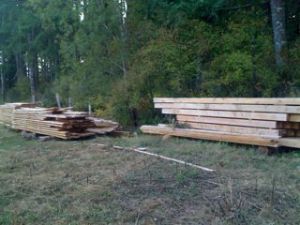 We took the tarps off our lumber when the dry season started, but soon they’ll be tarped up again. We’ve had two days of sunshine during which we laid the huge tarps out to dry. Tomorrow we’ll put them back over the lumber. While building the chicken tractor earlier this year I noticed the wood was still a bit wet in the middle, so more drying will be a good thing. We are thinking about using the lumber to build a greenhouse, and some exciting opportunities for a barter are in the works. A local family we know through our homelearning network needs firewood, and we have it in abundance. They are willing to exchange experienced labour (carpentry, no less) so we may use that to get a start on the green house. I’ll keep you posted on that project!
We took the tarps off our lumber when the dry season started, but soon they’ll be tarped up again. We’ve had two days of sunshine during which we laid the huge tarps out to dry. Tomorrow we’ll put them back over the lumber. While building the chicken tractor earlier this year I noticed the wood was still a bit wet in the middle, so more drying will be a good thing. We are thinking about using the lumber to build a greenhouse, and some exciting opportunities for a barter are in the works. A local family we know through our homelearning network needs firewood, and we have it in abundance. They are willing to exchange experienced labour (carpentry, no less) so we may use that to get a start on the green house. I’ll keep you posted on that project!
 The leaves are starting to turn around here, but we simply don’t get anything close to the spectacular show seen in the eastern parts of our continent. Here you can see a Western Flowering Dogwood, its leaves turning a lovely shade of red. It would probably look much better, however, if the leaves weren’t so dry and dead-looking. Still, I will be collecting the leaf fall for mulching and composting this year, and in that case it really doesn’t matter how pretty they are! In the background of this photo you can see our bushy Sitka Alder tree. A resident Stellar’s Jay has returned, sending out his raucous call every morning. He/she was here last year and it is neat to see the bird has returned. It will be one more way to mark the seasons around here. Oh, and speaking of trees, I identified three new ones on the property in the last couple of weeks. We have a Western White Pine, the only one I’ve found around her so far, an Oregon Ash, and a Smooth Sumac. Being the categorization geek that I am, I maintain an Excel spreadsheet with a list of all the flora and fauna I have identified. There are over ten varieties of tree on my list now, and I’m sure I’ll find a few more in the future.
The leaves are starting to turn around here, but we simply don’t get anything close to the spectacular show seen in the eastern parts of our continent. Here you can see a Western Flowering Dogwood, its leaves turning a lovely shade of red. It would probably look much better, however, if the leaves weren’t so dry and dead-looking. Still, I will be collecting the leaf fall for mulching and composting this year, and in that case it really doesn’t matter how pretty they are! In the background of this photo you can see our bushy Sitka Alder tree. A resident Stellar’s Jay has returned, sending out his raucous call every morning. He/she was here last year and it is neat to see the bird has returned. It will be one more way to mark the seasons around here. Oh, and speaking of trees, I identified three new ones on the property in the last couple of weeks. We have a Western White Pine, the only one I’ve found around her so far, an Oregon Ash, and a Smooth Sumac. Being the categorization geek that I am, I maintain an Excel spreadsheet with a list of all the flora and fauna I have identified. There are over ten varieties of tree on my list now, and I’m sure I’ll find a few more in the future.
 One surprise harvest that required no work at all in creating it was that of wild blackberries. The Himalayan Blackberry may be considered an “invasive species” but I’m not unhappy that a huge whack of them grew up around our big debris pile this year. After stumbling upon the plentiful berries yesterday while walking around the property, I stuffed myself silly and then, realizing there were still tons more, went back to the house to grab a bowl. I noticed that some large animals must have been trying to get at the berries too, as there were some paths trampled through the long growth around the berry patch. That made my job a bit easier, so I’m happy to share with the local wildlife.With only a few cuts and stabs from the evil spikes I filled up the bowl rather quickly (I sat it on a camping chair for this photo to provide some perspective on size). I’m planning on turning it into a low-sugar jam/spread and canning it (guess who picked up a complete canning kit recently?!). Then I can enjoy a taste of summer with my breakfasts for a while into the cold season. I’m sure even this big bowl will cook down to maybe only one or two jars, but perhaps if I’m lucky I’ll be able to harvest some more before they’re gone. One benefit of having so much property is allowing it to grow in some places. I’ll definitely be encouraging this “invader” in years to come!
One surprise harvest that required no work at all in creating it was that of wild blackberries. The Himalayan Blackberry may be considered an “invasive species” but I’m not unhappy that a huge whack of them grew up around our big debris pile this year. After stumbling upon the plentiful berries yesterday while walking around the property, I stuffed myself silly and then, realizing there were still tons more, went back to the house to grab a bowl. I noticed that some large animals must have been trying to get at the berries too, as there were some paths trampled through the long growth around the berry patch. That made my job a bit easier, so I’m happy to share with the local wildlife.With only a few cuts and stabs from the evil spikes I filled up the bowl rather quickly (I sat it on a camping chair for this photo to provide some perspective on size). I’m planning on turning it into a low-sugar jam/spread and canning it (guess who picked up a complete canning kit recently?!). Then I can enjoy a taste of summer with my breakfasts for a while into the cold season. I’m sure even this big bowl will cook down to maybe only one or two jars, but perhaps if I’m lucky I’ll be able to harvest some more before they’re gone. One benefit of having so much property is allowing it to grow in some places. I’ll definitely be encouraging this “invader” in years to come!
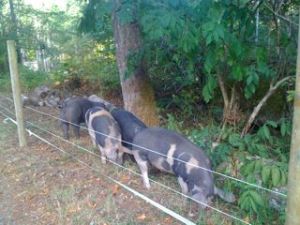 The pigs have grown huge over the summer, and will be ready for harvesting in about another month. Which is a good thing because we ran out of bacon!! We’re excited about having lots of bacon, sausage, ribs, and pork roasts soon. I don’t think we really can appreciate how much meat we are going to get from these four critters, but I’m sure there will be more than we need, and I’m hoping next year to offer some pork shares to friends and family. The pigs have really enjoyed their pasture – you can see a bit of the wooded section here. They truly are forest creatures, preferring to spend hot days and even rainy days under the trees, despite the fact that they have a shelter. They didn’t end up doing too much damage to the area, proving that we have a good ratio of pigs to land in this pasture. While we wanted them to clear things out a bit, we didn’t want to denude the land. I’m sure their manure will provide a new bounty of shoots and roots next spring for the next round of pigs.
The pigs have grown huge over the summer, and will be ready for harvesting in about another month. Which is a good thing because we ran out of bacon!! We’re excited about having lots of bacon, sausage, ribs, and pork roasts soon. I don’t think we really can appreciate how much meat we are going to get from these four critters, but I’m sure there will be more than we need, and I’m hoping next year to offer some pork shares to friends and family. The pigs have really enjoyed their pasture – you can see a bit of the wooded section here. They truly are forest creatures, preferring to spend hot days and even rainy days under the trees, despite the fact that they have a shelter. They didn’t end up doing too much damage to the area, proving that we have a good ratio of pigs to land in this pasture. While we wanted them to clear things out a bit, we didn’t want to denude the land. I’m sure their manure will provide a new bounty of shoots and roots next spring for the next round of pigs.
On another, dreamier note, I decided over the summer to change my plans for the layout of the farm. The northwest corner of our property is the highest point, and has a nice large flat area that is just calling out for a lovely cob house to be built there. I’d originally dismissed the idea because the tall forest on the west side of the property robs the spot of sun relatively early in the day. However, I’ve decided it doesn’t matter. Many a time I’ve gone up there to sit and reflect and admire the view, imagining that one day I’ll be seeing this view from our living room or south-facing deck. These two photos show the view, with a bit of overlap:


The lumber piles on the right are along the west border of the property, and that tall treeline continues on down the hill beyond the debris pile (this photo is facing due south). Husband and I have also decided that horses will be part of our future farm (more on those exciting developments in a subsequent post!) and the spot where the debris pile and scrap logs are sitting is a nice flat area that is just crying out for a barn. We’ll clear a strip about half the width of that photo all the way down to the bottom of the property for a pasture. But I’d like to keep the woods on the east side as they are of a different, and unique, composition (lots of cherry trees, maples, stinging nettles, and pacific bleeding hearts compared to the mostly fir and salal of the west side). The garden will stay where it is, but I’m trying to figure out how not to make it look like a stockade while still keeping out the deer. I could put a perimeter deer fence around the whole place, but I don’t want to shut out the elk who wander through this very field regularly throughout the year, so I’ll have to figure out something. On the left side of the left photo you can see my compost bins, and behind them one of the big maple trees I love. Meanwhile, whenever I need to think, cool off, or just want to take it all in I come and sit up here (on that cinder block) and dream about our plans for the future. I still have to pinch myself sometimes when I realize that we finally got our piece of land. And while it is still a work in progress, I’m very much in love with this place.
